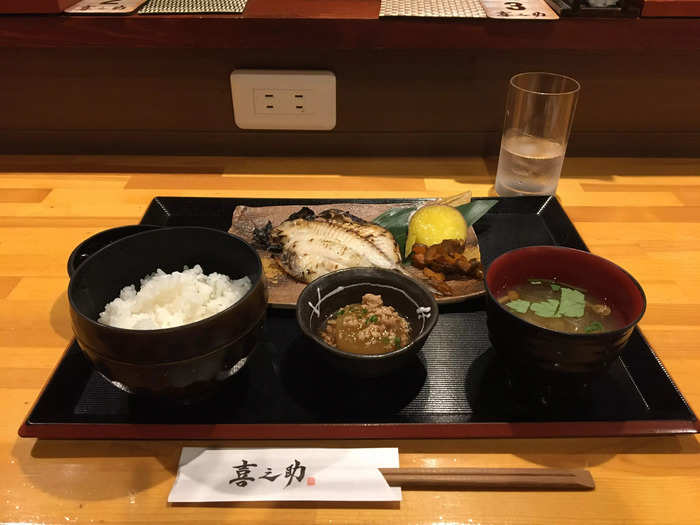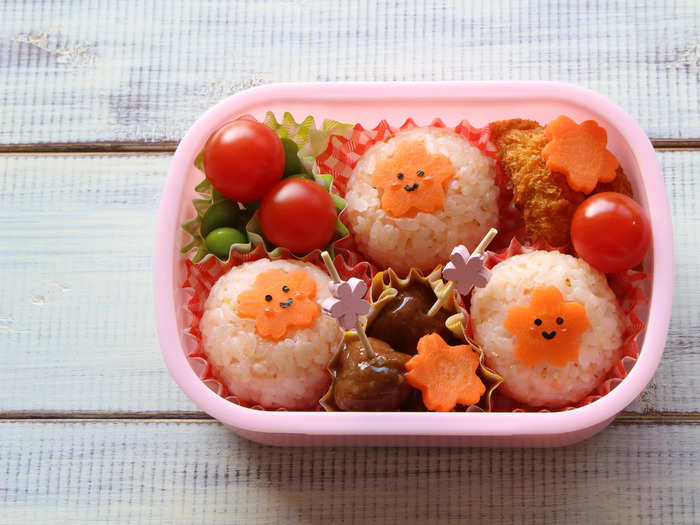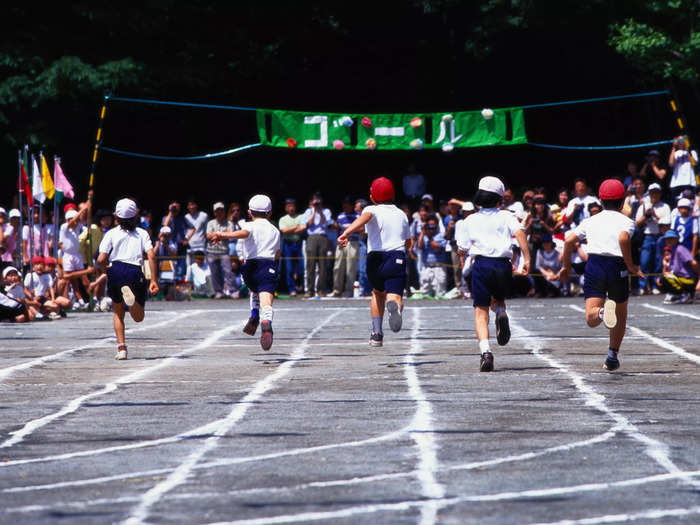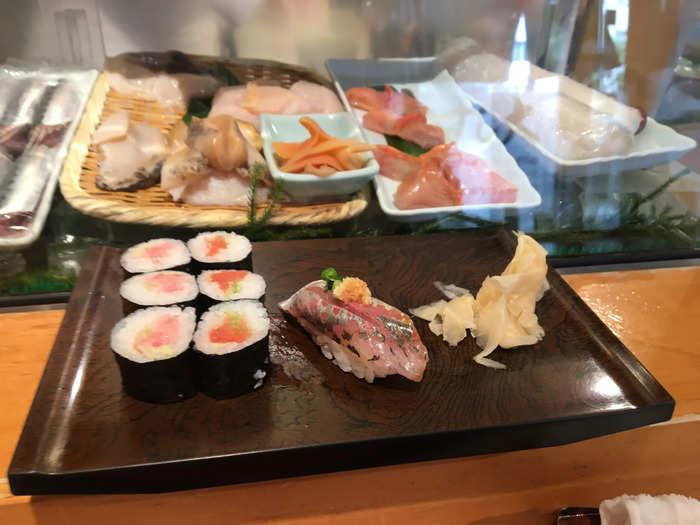The author points out that you can enjoy dessert and still live a perfectly balanced, healthy life.Kaki Okumura
- Kaki Okumura is a Japanese wellness writer who grew up in the US and Japan.
- She picked up daily habits while living in Japan that help her maintain a healthy weight.
Growing up in the US, it's easy to get caught up in the idea that in order to live healthfully, you must go to the gym, meal prep, cut out sugar, and otherwise be disciplined. America is the land of "go big or go home," where taking half-measures is often considered pointless. But is such strictness really necessary?
At 4.3%, Japan has one of the lowest rates of obesity among high-income developed nations, according to the World Population Review. Comparatively, the US sits at 36.2% and has the 12th highest obesity rate in the world. It's not because Japanese people are somehow more disciplined than others, rather, I believe it's the simple, moderate Japanese daily habits that make it much more sustainable for the modern lifestyle.
Here are five habits for a healthy weight I picked up from life in Japan.
1. Walk everywhere
Author took this photo on the backroads of Nagano, Japan Kaki Okumura
Japanese adults walk a lot. According to the 2019 National Health and Nutrition Survey, conducted by Japan's Ministry of Health, Labor, and Welfare, men average close to 7,000 steps, with women at just below 6,000 per day. Participants in the survey included 300,000 households in Japan, including 720,000 family members aged 1 and over. According to Mayo Clinic, the average American walks less than 4,000 steps a day.
As recently as the 1980s, Nagano had one of the highest stroke rates in the country. Over the years, the Japanese prefecture has incorporated over 100 walking routes in their community and has been able to reverse this trend. The prefecture boasts one of the highest longevity rates in Japan.
Japan tends to top global life expectancy rankings, with a 2020 average of 85 years from birth.
This isn't to say that we shouldn't engage in high-intensity exercises as well, but we should not discount the value of walking. A walk around the block or a stroll in the park can do wonders for our health.
2. Eat in moderation
A traditional meal set at a Japanese restaurant can often be finished in one sitting. Kaki Okumura
The modern Japanese diet isn't just grilled fish, miso soup, and rice anymore. There are people in Japan who sometimes choose to enjoy the same foods as the US, such as hamburgers, ice cream, and french fries. But the key differences lie in frequency, as well as portion size.
If you visit a McDonald's in Japan, you will find that their medium size drink is still smaller than an American small. A Japanese Domino's large pizza has a diameter of 13 inches, whereas in the US it's 14. The 16-inch extra-large pizza in the US is not available in Japan. Visit a Japanese restaurant, and you'll find that you can usually finish a meal without feeling overly stuffed at the end.
By practicing moderation, we can regularly eat what we want with no major repercussions for our health. There should be no need to give up sugar, carbs, or any of your favorite foods.
And, as vegetables, complex carbs, and fiber-rich foods are still better for you, adding healthy toppings can be a great way to create a more filling dish. For example, load up a bowl of soba with broccoli, edamame, mushrooms, and carrots.
3. Take cooking shortcuts
Japanese parents prepare healthy bento boxes for lunch. Shutterstock
Oftentimes, healthy home cooking is seen as an hourslong endeavor, only reserved for those with lots of time to spare. After a busy day of work, the prospect of cooking is so tiring, that we often resort to takeout.
But while home cooking does take some time, I've learned from Japanese bento box-making that cooking shortcuts can still be healthy. Working parents in Japan with little time in the morning typically make healthy lunches for their kids. There are ways to get clever with the shortcuts available.
Instead of boiling water, people often poach eggs or steam broccoli in the microwave. It's normal to rely on frozen peas or edamame to add a bit of green to a rice dish. I've learned to understand that there is nothing wrong with using a small portion of store-bought dressing on some chicken steamed in the microwave.
4. Prioritize joy when it comes to exercise
In Japan, Sports Day is a national holiday. Ken Usami/Getty
Many people consider exercise to be a necessary chore, rather than something they look forward to. This makes sense, considering exercise is often done to look a certain way or build a certain physique.
But in Japan, exercise is also often spoken about in terms of joy and quality of life, rather than calories burned. For example, the event "undoukai (運動会)" or Sports Day in the Japanese public school curriculum is an annual event held during the school year, where the entire school takes a day to participate in a variety of activities, ranging from track and field to tug-of-war. It's playful, collaborative, inclusive, and most importantly fun.
Sports Day is not just for students. It's a national holiday celebrated on the second Monday of October every year. Many working adults get the day off to support their children and participate in games or are encouraged by the government to do something to celebrate physical activity.
Exercise as a necessary chore to burn calories or look a certain way can be emotionally exhausting, but by reframing it for joy we receive immediate benefits: it makes us feel good.
5. Decadence is defined in terms of quality, not quantity
To the author, decadence is having fresh sushi at the counter, served straight from the morning’s fish auction. Kaki Okumura
If you look up decadent foods in the US, search results include Philly cheesesteaks, Chicago deep-dish pizzas, giant cheeseburgers, and ice cream sundaes. Decadence is often measured in terms of size and caloric value.
However, if you were to look up decadent foods in Japanese, you might be surprised to discover a page that shows fruits, vegetables, and even seafood. This isn't to say decadence is seen as healthy in Japan, but instead of size or caloric value, it is often measured through quality.
The seasonality of something, how it was produced, where it was grown, or how it was prepared are all factors contributing to the idea of decadence.
In this way, the idea of treating yourself to delicious food is not limited to large amounts of calorie-dense foods. While it can include those things, delicious foods can also take on an expanded meaning.
The Japanese approach to looking after my health has made it not just easy, but joyful. Looking after our health does not need to feel like a chore, but can instead be something integrated into our day-to-day to make our well-being feel more meaningful and fulfilling.
Kaki Okumura is the author of "Wa - The Art of Balance: Live Healthier, Happier and Longer the Japanese Way." To sign up for her weekly newsletter Kakikata, go to: kakikata.ck.page.





